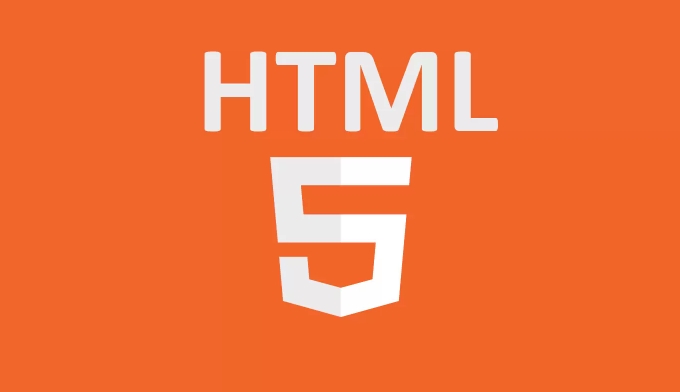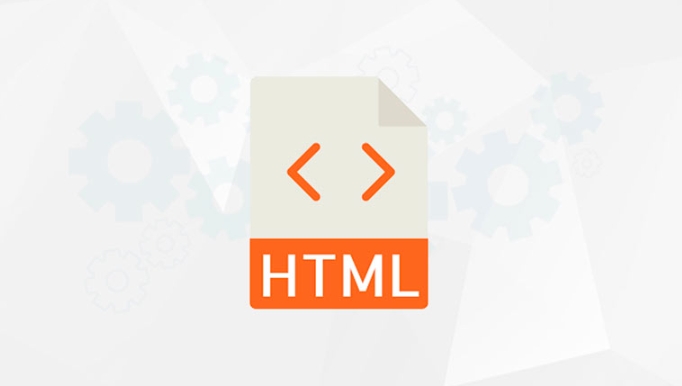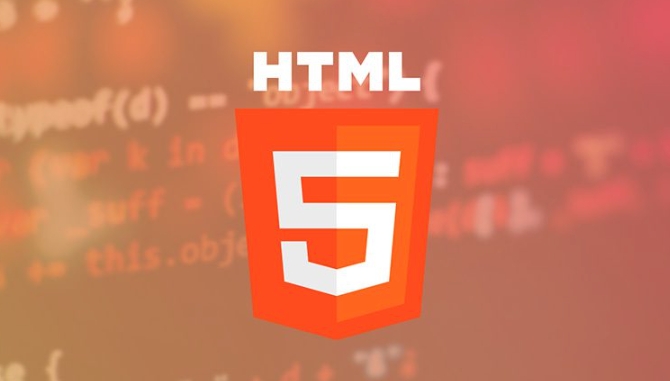 Web Front-end
Web Front-end
 HTML Tutorial
HTML Tutorial
 Which html attributes are essential for embedding audio with the tag?
Which html attributes are essential for embedding audio with the tag?
Which html attributes are essential for embedding audio with the tag?
Jun 28, 2025 am 02:04 AMTo effectively use the

When you want to embed audio in an HTML page, the <audio></audio> tag is your go-to element. But to make it work well across different browsers and user scenarios, a few key attributes are essential.
 tag?" />
tag?" /> Here's what you need to know about the most important attributes for the <audio></audio> tag.
 tag?" />
tag?" /> src – Specifies the Audio File Location
This is the most basic and necessary attribute. It tells the browser where to find the audio file you want to play.
- You can either use
srcdirectly on the<audio></audio>tag or include multiple sources using<source></source>elements inside<audio></audio>. - Supported formats vary by browser, but common ones include MP3, WAV, and OGG.
Example:
 tag?" />
tag?" /><audio src="music.mp3" controls></audio>
Or with multiple sources:
<audio controls> <source src="music.mp3" type="audio/mpeg"> <source src="music.ogg" type="audio/ogg"> Your browser does not support the audio element. </audio>
Make sure the file path is correct and the server supports byte-range requests, otherwise playback might not work properly.
controls – Enables Built-in Player Controls
If you want users to interact with the audio (play, pause, volume, etc.), you need to include the controls attribute.
- Without this, the audio player won't show any UI, making it effectively invisible unless you build custom controls with JavaScript.
- This is especially useful when you're embedding background music or podcasts where user control matters.
Just add it like this:
<audio src="music.mp3" controls></audio>
Some developers forget this attribute thinking the player will show up automatically — it won't.
preload – Helps Control How Much Audio Loads Initially
The preload attribute gives the browser a hint about how much of the audio file should be loaded when the page loads.
Options:
-
auto: Load the entire file (good for short clips). -
metadata: Only load metadata (like duration). -
none: Don't load until user clicks play.
Use this based on your needs:
- If you have a long podcast episode, consider
metadatato avoid large initial data usage. - For small sounds or short clips,
automake sense so it's ready to play instantly.
<audio src="music.mp3" controls preload="auto"></audio>
Note that preload is just a suggestion — the browser may ignore it depending on network conditions or settings.
type – Ensures Compatibility Across Browsers
When using multiple <source> elements, always specify the type attribute. This helps the browser quickly decide which file format it can play without downloading the whole file first.
Common MIME types:
- MP3 →
audio/mpeg - WAV →
audio/wav - OGG →
audio/ogg
Example:
<audio controls> <source src="song.mp3" type="audio/mpeg"> <source src="song.ogg" type="audio/ogg"> </audio>
Omitting the type isn't always a dealbreaker, but including it improves performance and avoids unnecessary requests.
Basically that's it.
You don't need all of them every time, but knowing when to use each one makes a difference in how your embedded audio behaves and performs.
The above is the detailed content of Which html attributes are essential for embedding audio with the tag?. For more information, please follow other related articles on the PHP Chinese website!

Hot AI Tools

Undress AI Tool
Undress images for free

Undresser.AI Undress
AI-powered app for creating realistic nude photos

AI Clothes Remover
Online AI tool for removing clothes from photos.

Clothoff.io
AI clothes remover

Video Face Swap
Swap faces in any video effortlessly with our completely free AI face swap tool!

Hot Article

Hot Tools

Notepad++7.3.1
Easy-to-use and free code editor

SublimeText3 Chinese version
Chinese version, very easy to use

Zend Studio 13.0.1
Powerful PHP integrated development environment

Dreamweaver CS6
Visual web development tools

SublimeText3 Mac version
God-level code editing software (SublimeText3)

Hot Topics
 Explain the purpose of the role attribute in ARIA.
Jun 14, 2025 am 12:35 AM
Explain the purpose of the role attribute in ARIA.
Jun 14, 2025 am 12:35 AM
ARIA's role attribute is used to define the role of web elements and improve accessibility. 1. Role attribute helps assistive technology to understand the functions of elements, such as buttons, navigation, etc. 2. Use role attributes to assign specific roles to non-semantic HTML elements. 3. The role attribute should be consistent with the element behavior and be verified by the accessibility tool test.
 HTML and Design: Creating the Visual Layout of Websites
Jun 14, 2025 am 12:39 AM
HTML and Design: Creating the Visual Layout of Websites
Jun 14, 2025 am 12:39 AM
How to create a website layout? 1. Use HTML tags to define the content structure, such as, ,. 2. Control styles and positions through CSS, using box model, float or Flexbox layout. 3. Optimize performance, reduce HTTP requests, use cache and optimize images, and ensure responsive design.
 How do I stay up-to-date with the latest HTML standards and best practices?
Jun 20, 2025 am 08:33 AM
How do I stay up-to-date with the latest HTML standards and best practices?
Jun 20, 2025 am 08:33 AM
The key to keep up with HTML standards and best practices is to do it intentionally rather than follow it blindly. First, follow the summary or update logs of official sources such as WHATWG and W3C, understand new tags (such as) and attributes, and use them as references to solve difficult problems; second, subscribe to trusted web development newsletters and blogs, spend 10-15 minutes a week to browse updates, focus on actual use cases rather than just collecting articles; second, use developer tools and linters such as HTMLHint to optimize the code structure through instant feedback; finally, interact with the developer community, share experiences and learn other people's practical skills, so as to continuously improve HTML skills.
 How do I use the element to represent the main content of a document?
Jun 19, 2025 pm 11:09 PM
How do I use the element to represent the main content of a document?
Jun 19, 2025 pm 11:09 PM
The reason for using tags is to improve the semantic structure and accessibility of web pages, make it easier for screen readers and search engines to understand page content, and allow users to quickly jump to core content. Here are the key points: 1. Each page should contain only one element; 2. It should not include content that is repeated across pages (such as sidebars or footers); 3. It can be used in conjunction with ARIA properties to enhance accessibility. Usually located after and before, it is used to wrap unique page content, such as articles, forms or product details, and should be avoided in, or in; to improve accessibility, aria-labeledby or aria-label can be used to clearly identify parts.
 How do I create a basic HTML document?
Jun 19, 2025 pm 11:01 PM
How do I create a basic HTML document?
Jun 19, 2025 pm 11:01 PM
To create a basic HTML document, you first need to understand its basic structure and write code in a standard format. 1. Use the declaration document type at the beginning; 2. Use the tag to wrap the entire content; 3. Include and two main parts in it, which are used to store metadata such as titles, style sheet links, etc., and include user-visible content such as titles, paragraphs, pictures and links; 4. Save the file in .html format and open the viewing effect in the browser; 5. Then you can gradually add more elements to enrich the page content. Follow these steps to quickly build a basic web page.
 How do I create checkboxes in HTML using the element?
Jun 19, 2025 pm 11:41 PM
How do I create checkboxes in HTML using the element?
Jun 19, 2025 pm 11:41 PM
To create an HTML checkbox, use the type attribute to set the element of the checkbox. 1. The basic structure includes id, name and label tags to ensure that clicking text can switch options; 2. Multiple related check boxes should use the same name but different values, and wrap them with fieldset to improve accessibility; 3. Hide native controls when customizing styles and use CSS to design alternative elements while maintaining the complete functions; 4. Ensure availability, pair labels, support keyboard navigation, and avoid relying on only visual prompts. The above steps can help developers correctly implement checkbox components that have both functional and aesthetics.
 What is an HTML tag?
Jun 13, 2025 am 12:36 AM
What is an HTML tag?
Jun 13, 2025 am 12:36 AM
HTMLtagsareessentialforstructuringwebpages.Theydefinecontentandlayoutusinganglebrackets,ofteninpairslikeand,withsomebeingself-closinglike.HTMLtagsarecrucialforcreatingstructured,accessible,andSEO-friendlywebpages.
 How do I minimize the size of HTML files?
Jun 24, 2025 am 12:53 AM
How do I minimize the size of HTML files?
Jun 24, 2025 am 12:53 AM
To reduce the size of HTML files, you need to clean up redundant code, compress content, and optimize structure. 1. Delete unused tags, comments and extra blanks to reduce volume; 2. Move inline CSS and JavaScript to external files and merge multiple scripts or style blocks; 3. Simplify label syntax without affecting parsing, such as omitting optional closed tags or using short attributes; 4. After cleaning, enable server-side compression technologies such as Gzip or Brotli to further reduce the transmission volume. These steps can significantly improve page loading performance without sacrificing functionality.





